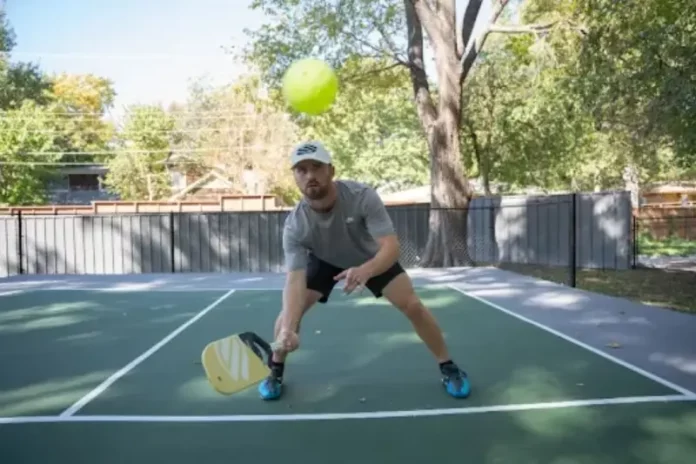How to Dink Consistently in Pickleball: Dinking—a low, controlled pickleball shot close to the net—is an essential skill in pickleball. However, many pickleball players struggle to maintain consistency in their dinks, which can be costly in intense matches. Coaches point to three common errors that can diminish even the most practiced players. Here’s a breakdown of each pickleball mistake and how to avoid it for greater precision and consistency on the court.
Avoiding the Mistake of Letting the Ball Getting Behind
One of the main issues pickleball players face is positioning, with many allowing the ball to get behind them before striking. For consistent performance, players should keep their body behind the ball, ensuring it remains within their peripheral vision. This helps maintain better control over the shot, reducing errors and allowing for a more stable and reliable dink.
The Wrist Flick: Why It Doesn’t Work?
Another misstep seen frequently on the court is flicking the wrist at the ball. According to experts, using the wrist in this way can lead to unpredictable shots, losing control and accuracy.
Instead, players should rely on larger muscle groups like the shoulders and latissimus dorsi (lats) to guide the ball over the net. This pickleball technique not only ensures a smoother dink but also reduces strain on the wrist, promoting better shot control.
Push, Don’t Slice, for Consistent Dinks
A third common error is attempting to slice the ball, which can create instability in the shot. Rather than slicing, players are encouraged to adopt a “push” approach, moving the paddle through the ball in a straight line to achieve consistency.
This adjustment allows for more predictable and controlled dinks, keeping the shot low and close to the net—exactly where it needs to be in competitive play.
The Path to Consistent Dinking
Players looking to elevate their game should focus on these fundamental adjustments. By keeping the ball in front, avoiding wrist flicks, and prioritizing a steady push over slicing, players can achieve a significant improvement in dinking consistency.
These simple changes not only promote better control but also pave the way for more advanced play as players master the precision needed to excel in pickleball.
News in Brief: How to Dink Consistently in Pickleball
Dinking, a crucial skill in pickleball, often challenges players striving for consistency, especially in intense matches. Coaches highlight three common errors that can reduce performance.
First, pickleball players frequently let the ball get behind them, hindering control. Keeping the ball in their peripheral vision is essential.
Second, relying on wrist flicks leads to unpredictable shots; instead, players should use larger muscle groups like shoulders for better accuracy.
Lastly, attempting to slice the ball creates instability; adopting a “push” technique promotes consistent, low dinks. By focusing on these adjustments, players can significantly enhance their dinking precision and overall game performance.
ALSO READ: Must-Have Training Aids in Pickleball to Boost Pickleball Skills and Elevate Performance

